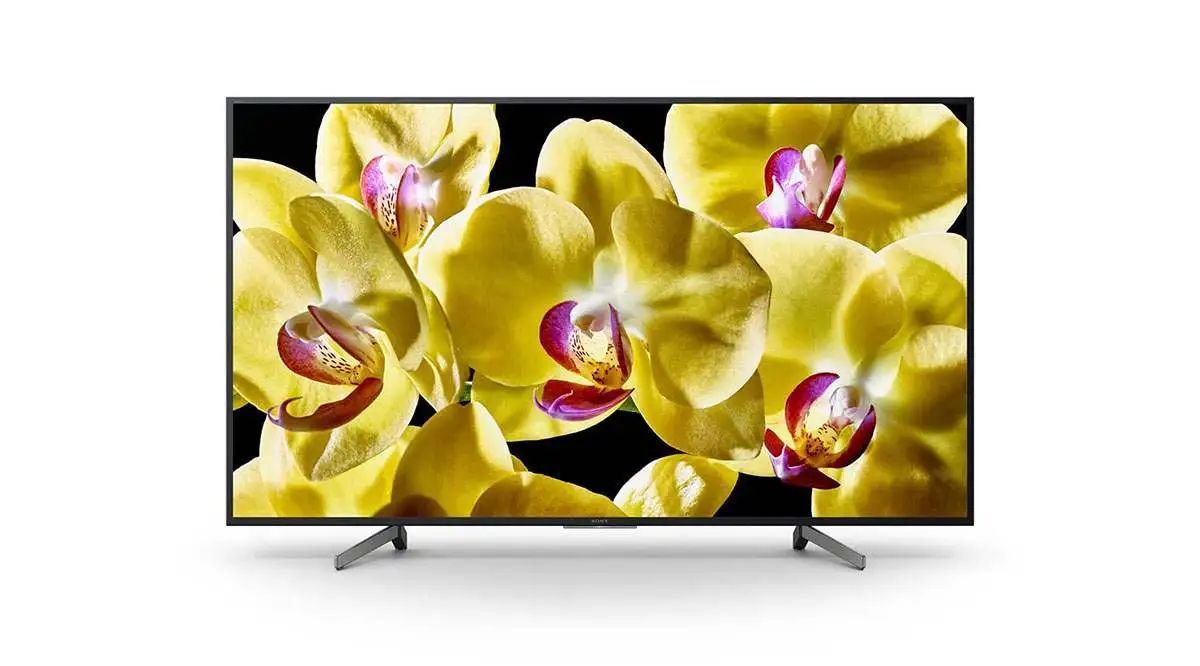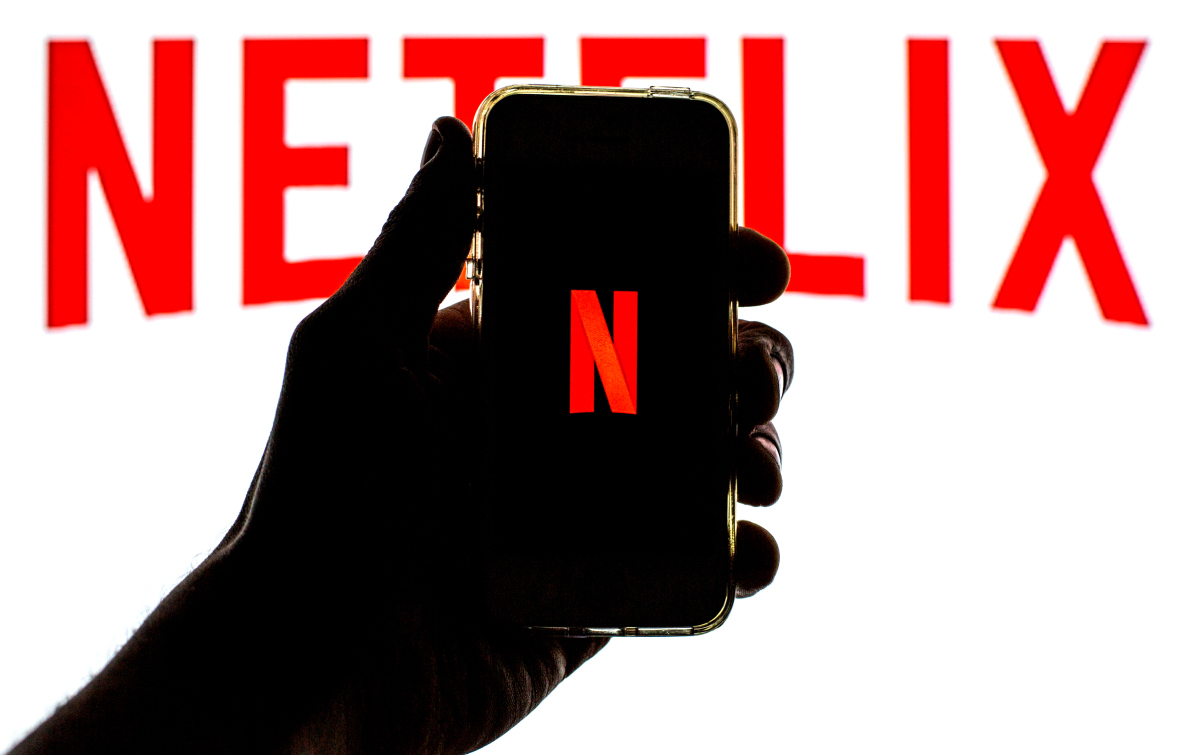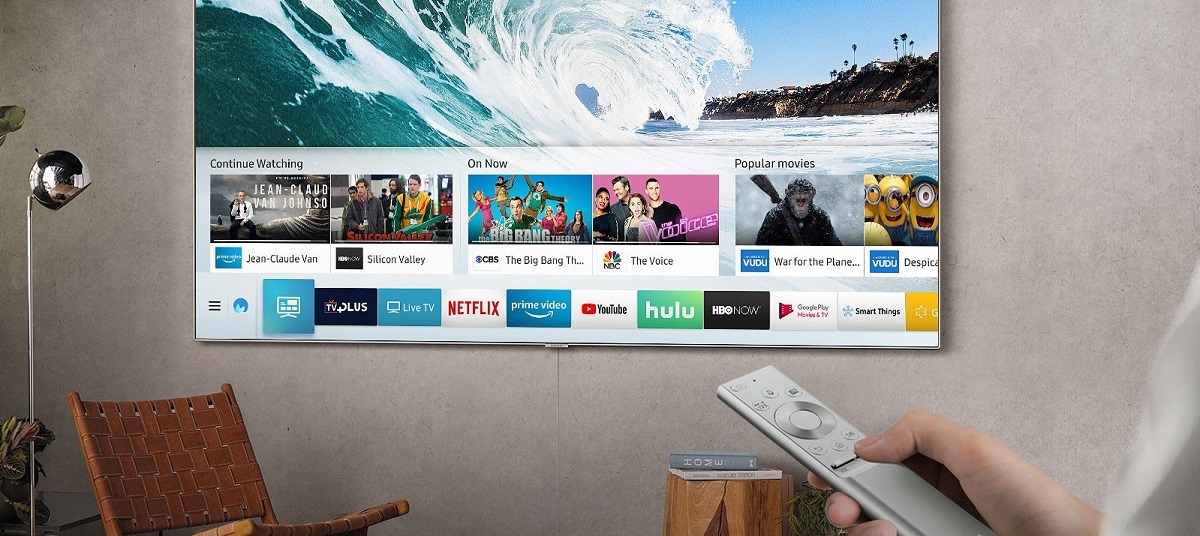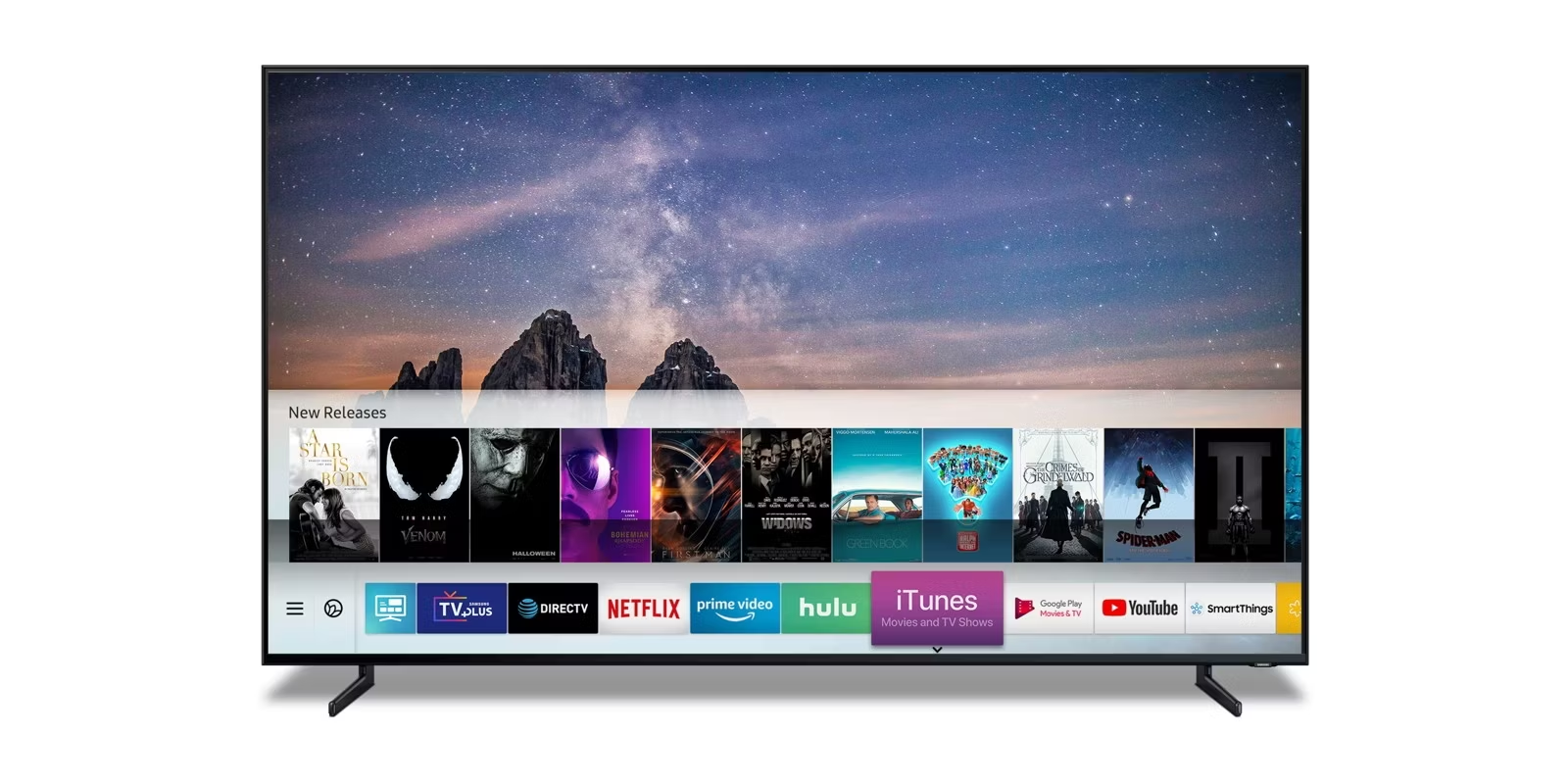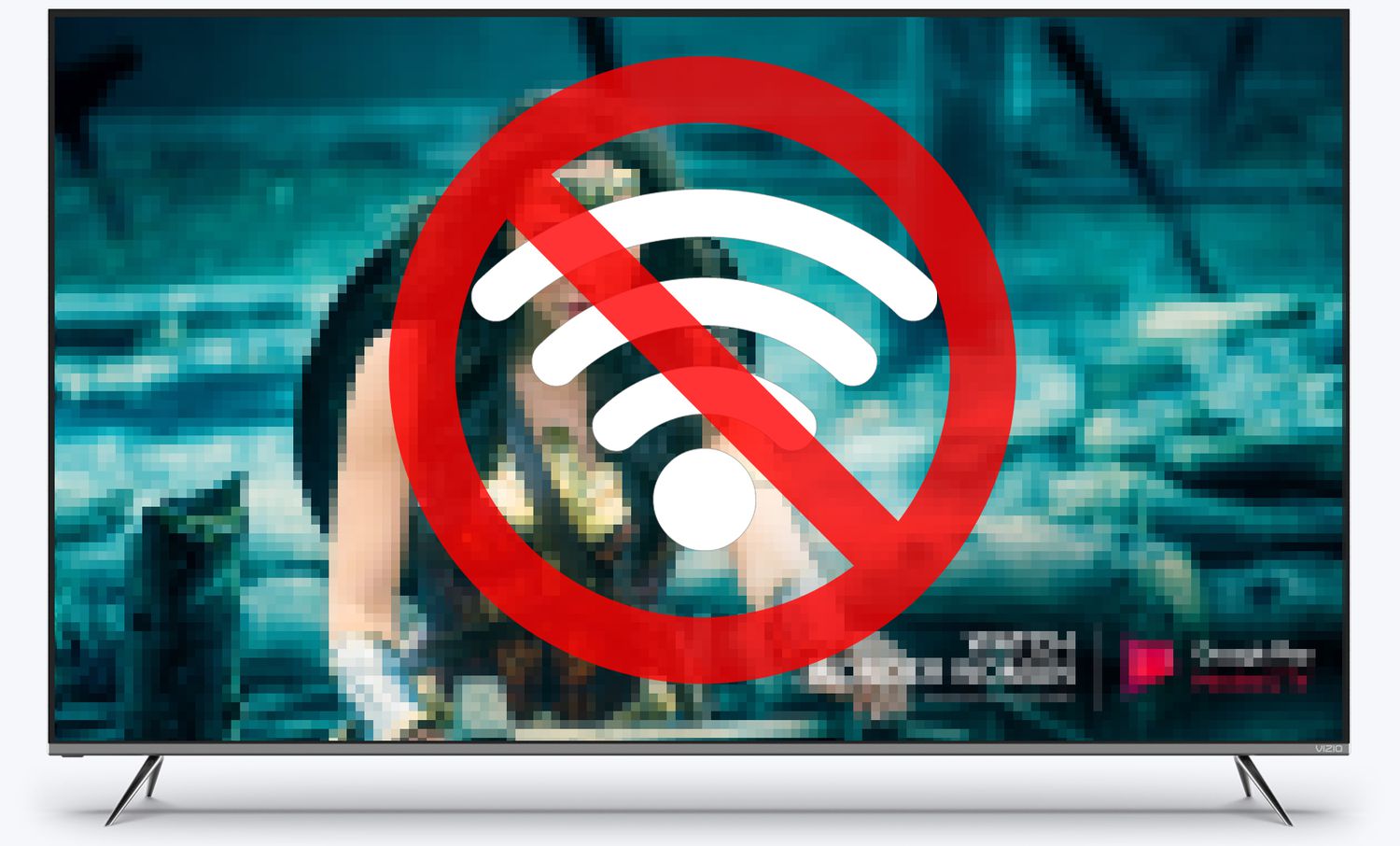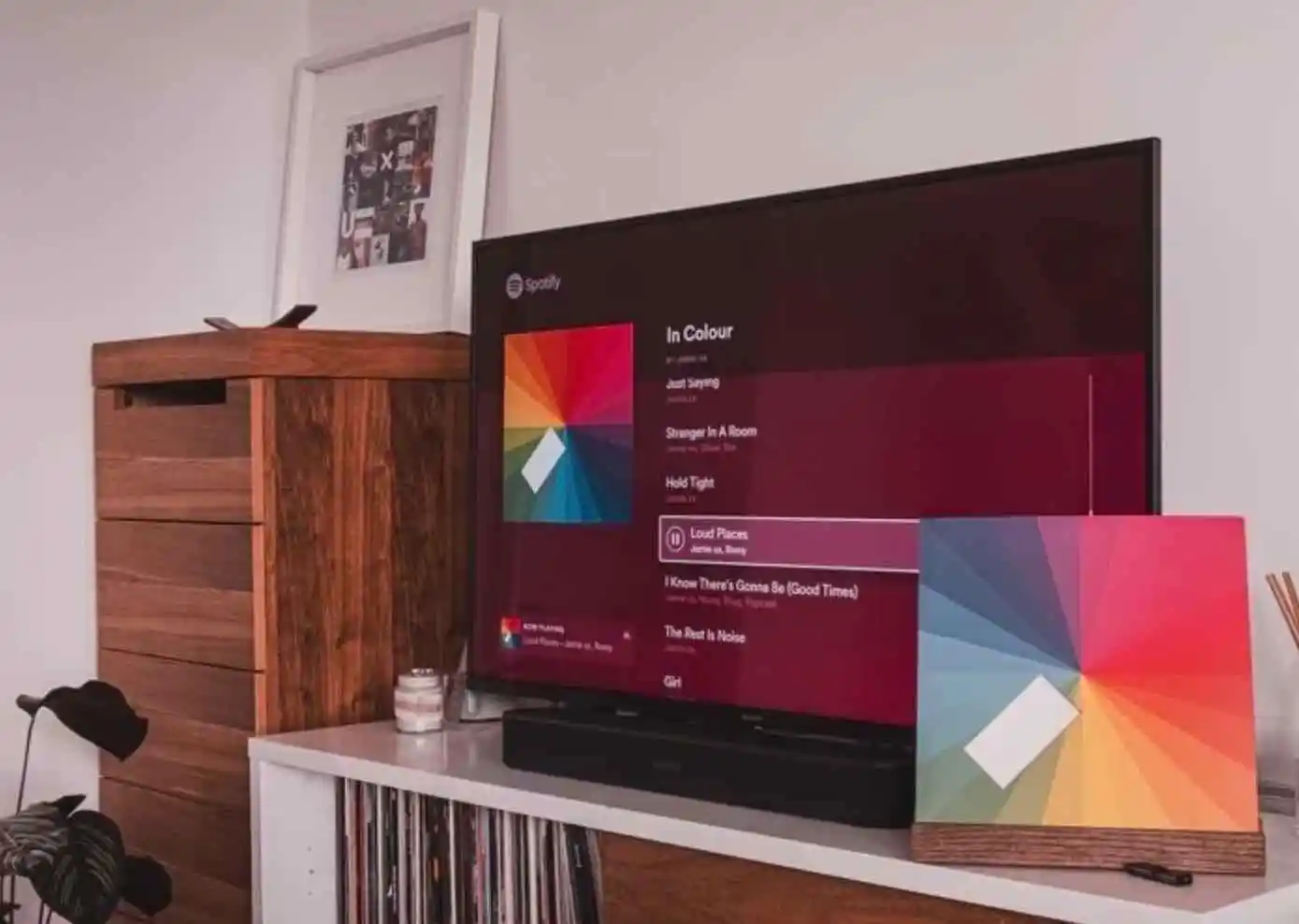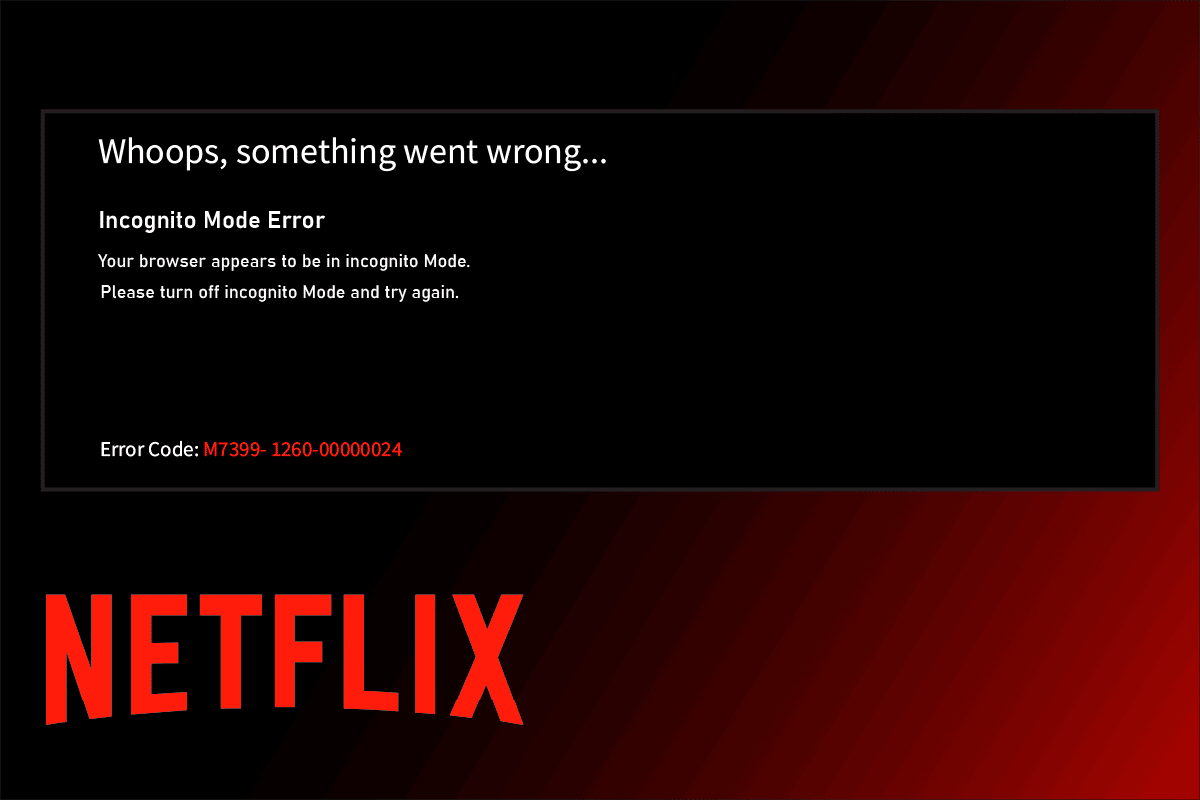Common Issues with Smart TV Internet Connectivity
Smart TVs have become an essential part of our entertainment experience, allowing us to access a wide range of online content from the comfort of our living rooms. However, there are times when we encounter issues with connecting our smart TVs to the internet. Understanding these common issues can help us troubleshoot and resolve them quickly. Here are some of the most common issues with smart TV internet connectivity:
-
Incorrect Network Settings
One of the primary reasons for smart TV internet connectivity issues is incorrect network settings. Double-check that your network settings, such as the Wi-Fi password or network name, are entered correctly on your smart TV.
-
Weak Wi-Fi Signal
A weak Wi-Fi signal can lead to intermittent or no internet connection on your smart TV. Ensure that your smart TV is within range of the router, and consider moving your router to a central location in your home or using a Wi-Fi extender to enhance the signal strength.
-
Outdated Firmware
Outdated firmware can result in compatibility issues and hinder your smart TV’s ability to connect to the internet. Check for firmware updates regularly and install the latest version to ensure optimal performance and connectivity.
-
DNS Configuration Problems
Incorrect or misconfigured DNS settings can prevent your smart TV from accessing the internet. Verify that your smart TV is using automatic or correct DNS settings or consider changing the DNS to a public DNS server like Google DNS (8.8.8.8) or Cloudflare DNS (1.1.1.1).
-
Security Settings Blocking Connection
In some cases, the security settings on your smart TV or router can prevent the device from connecting to the internet. Temporarily disable any firewalls or security features and check if the connection is established. If so, adjust the settings accordingly to allow the smart TV to connect.
-
IP Address Conflict
An IP address conflict can occur when two devices on the same network have the same IP address, causing connectivity issues. Ensure that your smart TV is assigned a unique IP address and check for any conflicting devices on the network.
-
Router Issues
Sometimes, the router itself may be experiencing issues that affect the internet connection of your smart TV. Restarting the router or performing a factory reset can often resolve these problems.
-
Network Interference
Other electronic devices, such as microwave ovens or cordless phones, can interfere with the Wi-Fi signal and disrupt the internet connection. Keep your smart TV away from potential sources of interference for a more stable connection.
-
Compatibility Issues with Network Standards
Ensure that your smart TV supports the network standards used by your router. If your TV only supports older standards like 802.11b/g, and your router is using the newer 802.11ac standard, you may experience connection issues. Consider upgrading your router or using an Ethernet connection for better compatibility.
-
Problems with Smart TV Hardware
Finally, it’s essential to consider that the issue might lie with the smart TV itself. Faulty hardware components or internal software issues can affect its connectivity. If you’ve exhausted all troubleshooting steps, contacting the manufacturer or seeking professional assistance may be necessary.
By being aware of these common issues with smart TV internet connectivity, you can troubleshoot and resolve any connection problems that arise. Remember to consult your smart TV’s user manual or manufacturer’s website for specific troubleshooting instructions related to your device. With a little patience and perseverance, you’ll have your smart TV connected to the internet and ready to enjoy all the streaming content you desire.
Incorrect Network Settings
Incorrect network settings can be a common reason why your smart TV is not connecting to the internet. When setting up your smart TV, it’s crucial to ensure that you enter the correct network information, such as the Wi-Fi password and network name. Even a small typing error can prevent your smart TV from establishing a connection.
To troubleshoot this issue, start by accessing the network settings on your smart TV. Go to the settings menu and find the network or Wi-Fi section. Verify that the network name (SSID) matches the name of your home network. If it doesn’t, select the correct network from the available options.
Next, double-check the Wi-Fi password you entered. Make sure that you have entered the password correctly, considering that Wi-Fi passwords are case-sensitive. If you are unsure about the password, you can check the password on your router by logging into its administration interface. If necessary, update the password in the smart TV settings.
If you’ve verified that the network name and password are correct, but your smart TV still won’t connect, try restarting the TV and the router. Sometimes a simple reboot can resolve connectivity issues. Turn off both devices, wait for a few minutes, and then turn them back on. Once they have powered up, attempt to connect the smart TV to the network again.
If you are using a wired connection, make sure that the Ethernet cable is securely plugged into both your smart TV and the router. Check for any loose connections or damaged cables that may hinder the connection.
If the issue persists, consider removing the network profile from your smart TV and adding it again. This process may vary depending on the TV model, so consult your user manual for the specific steps. By deleting and re-adding the network profile, you ensure that all network settings are cleared, allowing you to start fresh.
Remember to save any changes you make to the network settings on your smart TV. Some devices require you to manually save or apply the settings before they take effect. This step ensures that your changes are applied and the smart TV is reconfigured to connect to the correct network.
By taking the time to review and correct any incorrect network settings, you can overcome connectivity issues and enjoy seamless internet access on your smart TV.
Weak Wi-Fi Signal
A weak Wi-Fi signal can be a common obstacle to smart TV internet connectivity. When the signal strength is low, your smart TV may struggle to establish a stable connection or may not connect at all. Fortunately, there are a few steps you can take to improve the Wi-Fi signal and enhance your smart TV’s connectivity.
Firstly, consider the location of your smart TV and the distance from the wireless router. If the TV is located far away from the router or if there are physical barriers such as walls and furniture obstructing the signal, the Wi-Fi strength can weaken. Try moving the smart TV closer to the router or rearranging the furniture to optimize signal reception.
If relocating the smart TV is not feasible, you can use a Wi-Fi range extender or repeater. These devices amplify the existing Wi-Fi signal, extending its range to reach areas with a weak signal. Place the range extender strategically between the router and the smart TV to receive and transmit a stronger Wi-Fi signal.
Another option is to upgrade your router’s antennas. Some routers allow you to detach and replace the antennas with high-gain or directional antennas. These antennas can provide a stronger, more focused signal, potentially improving the Wi-Fi connectivity to your smart TV.
Consider adjusting the wireless channel on your router. In crowded areas with multiple Wi-Fi networks, interference can cause signal degradation. By accessing your router’s administration interface and selecting a less congested channel manually, you can minimize interference and enhance the Wi-Fi signal quality.
Keep in mind that other electronic devices can also interfere with the Wi-Fi signal. Devices like cordless phones, microwaves, and baby monitors can emit electromagnetic waves that disrupt the wireless signal. Ensure that your smart TV is placed away from such devices to prevent signal interference.
Updating your router’s firmware is also crucial. Manufacturers often release firmware updates that improve signal strength, stability, and overall performance. Check the manufacturer’s website for the latest firmware version and follow the instructions provided to update the router accordingly.
If your Wi-Fi signal remains weak despite these efforts, consider using a wired Ethernet connection instead. Most smart TVs have an Ethernet port that allows you to connect directly to the router using an Ethernet cable. This wired connection eliminates the dependence on Wi-Fi and offers a more reliable and stable internet connection.
By addressing the issue of weak Wi-Fi signal and implementing these tips, you can significantly improve the internet connectivity of your smart TV, allowing for uninterrupted streaming and online entertainment.
Outdated Firmware
Outdated firmware can often be the culprit behind connectivity issues with your smart TV. Firmware is the software that controls the operations of your device, including its ability to connect to the internet. If your smart TV’s firmware is outdated, it may not be compatible with the latest network protocols and security measures, which can lead to connectivity problems.
To check if your smart TV’s firmware is up to date, you can access the settings menu or the manufacturer’s website for firmware updates. In the settings menu, look for a “Software Update” or “Firmware Update” option. Select it to initiate the process.
If there is a firmware update available, follow the on-screen instructions to download and install the latest version. This update can improve your smart TV’s performance, address known connectivity issues, and ensure compatibility with the latest network standards.
If you don’t find an option for firmware updates in the settings menu, visit the manufacturer’s website for support. Look for the model number of your smart TV and check if there are any available firmware updates specifically for your device. Download the firmware file onto a USB drive, follow the manufacturer’s instructions to install the update, and connect the USB drive to your smart TV to initiate the firmware update process.
It’s important to note that during the firmware update, your smart TV should not be turned off or disconnected from the power source. Interrupting the update process can cause irreversible damage to the device. Allow the update to complete fully, and the smart TV will reboot automatically once the firmware is successfully installed.
Regularly checking for firmware updates is crucial to ensure optimal performance and compatibility with the latest network technologies. Manufacturers often release new firmware versions that address bugs, security vulnerabilities, and improve overall functionality.
By keeping your smart TV’s firmware up to date, you can help resolve connectivity issues and ensure a seamless internet connection, allowing you to enjoy all the streaming content and online features that your smart TV has to offer.
DNS Configuration Problems
DNS (Domain Name System) configuration problems can cause connectivity issues with your smart TV. The DNS server is responsible for translating domain names (e.g., www.example.com) into IP addresses that devices can understand and communicate with. Misconfigured or incorrect DNS settings can prevent your smart TV from accessing the internet.
To troubleshoot DNS configuration problems on your smart TV, first, check if the DNS settings are set to automatic or manual configuration. Automatic configuration is usually recommended as it allows the device to obtain DNS settings automatically from the router. If it is set to manual, ensure that the DNS servers listed are valid and correct.
If you are experiencing DNS issues, try changing the DNS settings to use public DNS servers like Google DNS (8.8.8.8, 8.8.4.4) or Cloudflare DNS (1.1.1.1, 1.0.0.1). These public DNS servers are widely used, reliable, and can offer faster and more stable connections compared to your Internet Service Provider’s default DNS servers.
To change the DNS settings on your smart TV, go to the network settings menu and find the DNS configuration option. Enter the desired DNS server addresses and save the changes. If your TV requires a reboot or network reconnection for the changes to take effect, ensure that you do so.
In some cases, DNS cache can cause problems as well. DNS cache is a temporary storage of IP addresses that your smart TV uses to speed up web page loading. However, outdated or incorrect information in the DNS cache can lead to connectivity issues. Clearing the DNS cache on your smart TV can help resolve these problems. The process may vary depending on the TV’s make and model, so consult the user manual or the manufacturer’s website for specific instructions.
If changing the DNS settings and clearing the cache does not resolve the issue, you can try rebooting your smart TV and the router. This can help refresh the network connections and establish a new DNS connection.
If the problem persists, it may be worth contacting your Internet Service Provider (ISP) for assistance. They can check if there are any DNS-related issues or if there are any known problems affecting your area. They may also provide specific DNS server addresses that are recommended for their network.
By addressing DNS configuration problems, you can ensure that your smart TV is using the correct DNS settings, allowing for a smoother and more reliable internet connection.
Security Settings Blocking Connection
Sometimes, the security settings on your smart TV or router can be the cause of connectivity issues. Although these security measures are crucial for protecting your network, they can sometimes block the connection between your smart TV and the internet.
To troubleshoot this issue, start by checking the security settings on your smart TV. Look for any built-in firewalls or security features that may be blocking the internet connection. Temporarily disable these security settings and check if the connection is established. If the connection works with the security settings turned off, you can selectively enable them and adjust the settings to allow the smart TV to connect.
Similarly, check the security settings on your router. Firewalls and other security features on the router can sometimes be too restrictive and block legitimate connections. Log in to the router’s administration interface and review the security settings. Look for any settings that may be preventing the smart TV from accessing the internet and adjust them accordingly. Keep in mind that making changes to the router settings should be done with caution, as it can affect the overall network security.
If your router uses MAC address filtering, ensure that the MAC address of your smart TV is added to the allowed devices list. MAC address filtering restricts network access to devices with specific MAC addresses. Adding your smart TV’s MAC address to the whitelist can allow it to connect to the network, even if the security settings are set to block unknown devices.
Another potential security setting that may interfere with the connection is the Wi-Fi network encryption type. Ensure that your smart TV supports the encryption type used by your router (e.g., WPA2-PSK or WEP). Mismatched encryption types can prevent the smart TV from connecting to the network. Adjust the encryption settings on your router if necessary.
Keep in mind that while temporarily disabling security settings can help diagnose the issue, it is vital to re-enable them once the connection is established. Ensure that your smart TV is protected by a robust security setup to safeguard your network and personal information.
If you have exhausted troubleshooting options and are still unable to establish a connection, contacting your router manufacturer or smart TV’s customer support can provide further guidance and assistance. They can help you navigate the specific security settings on your devices and troubleshoot any issues that may be blocking the internet connection.
By reviewing and adjusting the security settings on your smart TV and router, you can ensure a safe and secure internet connection without sacrificing the ability to connect your smart TV to the internet.
IP Address Conflict
IP address conflicts can be a common cause of internet connectivity issues with your smart TV. An IP address conflict occurs when two devices on the same network are assigned the same IP address. This can result in a disruption of communication between your smart TV and the network, preventing it from accessing the internet.
To resolve an IP address conflict, start by checking the IP address assigned to your smart TV. Go to the network settings on your TV and review the IP address configuration. If you notice that the IP address assigned to your smart TV is the same as another device on the network, follow the steps below to resolve the conflict.
Firstly, try restarting both your smart TV and the device that shares the conflicting IP address. Power off both devices, wait for a few minutes, and then power them back on. This can sometimes refresh the network connections and resolve the conflict.
If the conflict persists after a restart, you can manually assign a unique IP address to your smart TV. To do this, access the network settings on your TV and switch from automatic IP address assignment to manual configuration. Then, enter a unique IP address within the range defined by your router’s IP address pool. Be sure to choose an IP address that is not being used by any other device on the network.
Another option is to enable DHCP reservation on your router. DHCP reservation allows you to assign a specific IP address to your smart TV based on its MAC address. By reserving an IP address for your smart TV, you can ensure that it always receives the same address without the risk of conflicts.
If you are unsure how to enable DHCP reservation on your router, consult the router’s user manual or the manufacturer’s website for specific instructions. Keep in mind that the process may vary depending on the router model.
It’s also worth noting that if you continue to experience IP address conflicts despite the above steps, it may be necessary to review your network infrastructure. Ensure that your router’s DHCP settings are properly configured and that the DHCP server range is large enough to accommodate all devices on the network.
By addressing IP address conflicts, you can ensure that your smart TV is assigned a unique and valid IP address, allowing it to establish a stable connection and access the internet without interruption.
Router Issues
Router issues can often be the root cause of connectivity problems with your smart TV. The router is the central hub that manages your network, and any issues with its configuration or performance can impact the internet connection on your smart TV.
One of the first steps in troubleshooting router issues is to power cycle the router. Turn off the router, wait for about 30 seconds, and then turn it back on. This simple reboot can resolve temporary glitches and restore connectivity between the router and your smart TV.
If power cycling doesn’t solve the problem, check the router’s settings and ensure that it is properly configured for your network. Double-check the Wi-Fi settings, such as network name (SSID) and password, to ensure they match the ones you entered on your smart TV. Any discrepancies in settings can prevent your smart TV from connecting to the Wi-Fi network.
Updating the firmware of your router is also essential for optimal performance and stability. Manufacturers regularly release firmware updates that address bugs, security vulnerabilities, and improve overall functionality. Check the manufacturer’s website or the router’s administration interface for available firmware updates and follow the instructions provided to install the latest version.
Consider checking the number of devices connected to your router. If there are too many devices connected and actively using the internet, it can strain the router’s resources and result in a weaker signal or unreliable connectivity. Disconnect any devices that are not in use or consider upgrading to a router with better capacity to handle multiple connected devices.
If you are using older router models, they may not be equipped to handle the increasing demands of modern internet usage. Upgrading to a newer router with advanced features and improved performance can help overcome connectivity issues and provide a more stable connection for your smart TV.
Furthermore, you can reset your router to its factory default settings as a last resort. This will erase all configuration settings and restore the router to its original state. However, be aware that this step will remove any custom settings, including Wi-Fi passwords and port forwarding configurations. Ensure that you have the necessary information to reconfigure the router after the reset.
If none of these steps resolve the router issues, it may be necessary to contact your Internet Service Provider (ISP) for further assistance. They can help diagnose any specific issues with the router or even provide a replacement if necessary.
By addressing router issues, you can ensure that your smart TV has a stable and reliable connection to the internet, allowing you to stream content and access online services without interruptions.
Network Interference
Network interference can be a significant factor affecting the internet connection of your smart TV. Various electronic devices and environmental factors can interfere with the Wi-Fi signal, leading to weak or unstable connectivity. Understanding and mitigating the sources of network interference can greatly improve your smart TV’s internet performance.
One common source of network interference is other electronic devices in close proximity to your smart TV and router. Devices like cordless phones, microwave ovens, baby monitors, and even Bluetooth devices can emit electromagnetic waves that interfere with the Wi-Fi signal. To minimize interference, keep your smart TV and router away from these devices, especially during use.
Physical obstructions such as walls, furniture, and even large appliances can also weaken the Wi-Fi signal. Ideally, position your smart TV and router in a central location within your home and minimize the number of obstacles between them. If the signal still weakens due to physical barriers, consider using Wi-Fi range extenders or mesh Wi-Fi systems to boost the signal strength and extend coverage throughout your home.
Another source of network interference can be neighboring Wi-Fi networks operating on the same or overlapping channels as your own network. In densely populated areas, multiple Wi-Fi networks can cause signal congestion and interference. To alleviate this issue, access your router’s administration interface and manually select a less congested channel. Experiment with different channels to find the one with the least interference for better Wi-Fi performance.
Power cycling your smart TV and router can also help mitigate temporary interference caused by signal congestion. By turning off both devices, waiting for a few seconds, and then turning them back on, you can refresh the network connections and potentially find a less congested channel to improve your smart TV’s connectivity.
Interference from outdoor factors like weather conditions or nearby construction can also impact your Wi-Fi signal. While you may not have control over these external factors, it’s worth considering them if you notice a sudden drop in your smart TV’s internet performance. In such cases, waiting for the unfavorable conditions to pass or adjusting the positioning of your router may help restore the connection.
Lastly, it’s crucial to keep your router’s firmware up to date. Manufacturers often release firmware updates that include performance enhancements and bug fixes, which can improve signal stability and reduce the impact of interference. Regularly check for firmware updates on the manufacturer’s website or within the router’s administration interface and install them as needed.
By addressing network interference issues, you can optimize your smart TV’s internet connection and enjoy seamless streaming and online content without the disturbances caused by signal interference.
Compatibility Issues with Network Standards
Compatibility issues with network standards can hinder the internet connectivity of your smart TV. Network standards, such as Wi-Fi protocols, have evolved over time to provide faster speeds and better performance. If your smart TV’s compatibility does not align with the network standards used by your router, connecting to the internet can become challenging.
To address compatibility issues, first, determine the Wi-Fi standards supported by your smart TV. Common Wi-Fi standards include 802.11b, 802.11g, 802.11n, and 802.11ac. You can find this information in your smart TV’s user manual or specifications.
Next, check the Wi-Fi capabilities of your router. Most modern routers support multiple Wi-Fi standards, including backward compatibility with older standards. However, if your router is using the latest standard, such as 802.11ac, and your smart TV only supports older standards like 802.11b/g, compatibility issues may arise.
If your smart TV does not support the same Wi-Fi standard as your router, there are a few steps you can take to resolve the compatibility issue. One option is to upgrade your router to a model that supports the Wi-Fi standard supported by your smart TV. This will ensure better compatibility and performance for your wireless network as a whole.
If upgrading the router is not a feasible solution, consider connecting your smart TV to the router using an Ethernet cable. The Ethernet connection provides a stable and reliable internet connection without relying on Wi-Fi compatibility. Most smart TVs have an Ethernet port on the back panel for this purpose. Connect one end of the Ethernet cable to the Ethernet port on your smart TV and the other end to an available LAN port on the router.
If neither upgrading the router nor using an Ethernet connection is viable, you may encounter limitations in terms of internet speed and connectivity. However, you can still optimize the performance by ensuring that other Wi-Fi devices on the network are not causing congestion or interference. Limiting the number of connected devices, minimizing background downloads, and using Wi-Fi range extenders or mesh systems can help improve signal strength and stability.
Keep in mind that future-proofing your devices is essential when it comes to compatibility with evolving network standards. When purchasing a new smart TV, ensure that it supports the latest Wi-Fi standards to minimize potential compatibility issues down the line.
By addressing compatibility issues with network standards, you can overcome hurdles that may hinder your smart TV’s internet connectivity and ensure a reliable connection for streaming and accessing online content.
Problems with Smart TV Hardware
While software and network-related issues are often the main culprits behind smart TV internet connectivity problems, there can also be instances where the hardware itself is causing the issue. Internal hardware problems can affect the smart TV’s ability to connect to the internet and require specific attention to resolve.
If you suspect hardware issues with your smart TV, start by checking the physical connections. Ensure that all cables, particularly the Ethernet cable or Wi-Fi adapter, are securely plugged in. If using Wi-Fi, make sure there are no loose or damaged Wi-Fi antenna cables. A loose connection can result in intermittent or no internet connectivity.
Additionally, examine the Ethernet port on your smart TV for any signs of damage. Bent or broken pins within the port can prevent a stable connection. If a faulty Ethernet port is identified, consider contacting the manufacturer’s support to determine the best course of action, such as repair or replacement.
In some cases, a firmware glitch or a software bug can cause hardware-related issues. Check for available firmware updates on the manufacturer’s website or within the smart TV’s settings menu. Upgrading to the latest firmware version can often address software-related hardware problems and improve the overall performance of your smart TV.
Another possible hardware issue is a malfunctioning network adapter. The network adapter is responsible for connecting your smart TV to the internet. If the network adapter is faulty, it can prevent your smart TV from establishing an internet connection. In such cases, contacting the manufacturer’s support is recommended to seek assistance in diagnosing and resolving the hardware problem.
Power cycling your smart TV can also help resolve hardware-related issues. Turn off the TV, unplug it from the power source, and wait for about 30 seconds. Then, plug it back in and power it on. This simple reset can sometimes clear temporary hardware glitches and restore proper functionality.
If all troubleshooting steps fail to resolve the hardware issues with your smart TV, it may be necessary to contact the manufacturer’s customer support or seek professional assistance. They can provide further guidance and help determine whether your smart TV requires repairs or replacement.
Hardware problems are relatively rare, but they should not be overlooked when troubleshooting connectivity issues with a smart TV. By considering and addressing potential hardware issues, you can ensure that your smart TV’s internals are functioning properly, allowing for a smooth and uninterrupted internet connection.







